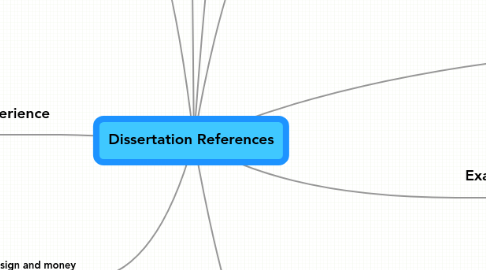Dissertation References
Door Martin Fasterholdt


1. Game Experience
1.1. Video Games Keep Tricking Us Into Doing Things We Loathe
1.2. Tom Chatfield: 7 ways games reward the brain (2010, lecture)
1.3. Design Outside the Box (2010, lecture)
1.4. My Gamerscore is 1,650, and I've Never Felt Better (2010, article)
1.5. GDC Online: Player Retention Requires Real Motivation, Engagement
2. Game design and money
2.1. Social Network Games: ARPU over Design (2010, article)
2.2. Death to the Games Industry: Long Live Games (2005, article)
3. Game design
3.1. Rules of Play (2004, book)
3.2. Design Reboot (2007, lecture)
3.3. Games and the Human Condition (2010, lecture)
3.4. Why so hard? (2010, article)
3.5. Designing Rewards in Games (2010, article)
3.6. MetaGame Design Reward systems that drive engagement (2010, lecture)
3.7. Cow Clicker The Making of Obsession (2010, article)
3.8. The Video Games of Video Games: Prejudices against Social Games...(2010, article)
3.9. History Repeating: or Why Gamers Despise Social Games (2010, article)
3.10. Ian Bogost at X-Media Lab: Serious Gaming (2009, lecture)
3.11. Llamasoft And The Space Giraffe (2007, lecture)
4. Psychology
4.1. Punished by Rewards (1993, book)
4.2. The surprising science of motivation (2009, lecture)
4.3. Procrastination (2010, article)
4.4. Competitiveness vs. Excellence (2010, article)
4.5. RSA Animate - Drive: The surprising truth about what motivates us
5. Read not cited
5.1. Is 'gamification' the future?
5.2. Achievements Considered Harmful?
5.3. Extra Credits: The Skinner Box (2010, video)
5.4. Video Games That Watch Back
5.5. Flow: The Psychology of Optimal Experience
5.6. Behavioral Game Design
5.7. Peering At The Future: Jesse Schell Speaks
5.8. Blow: Over-Using Reward Systems Can Make Games Less Fun
5.9. Nietzsche on Happiness
5.10. TheseShouldNotExist
5.11. CrowFlower
5.12. KingdomOfLoathing
5.13. SustainingPlayerEngagement
5.14. LazzaroFunTypes
5.15. Reward Systems, An Excerpt From Level Design: Concept, Theory, and Practice
5.16. Gamification Backlash Roundup
6. Case studies
6.1. Cultivated Play: Farmville (2010, essay, talk)
6.2. 2010_PopCap_Social_Gaming_Research_Result (2010, report)
6.3. Comparing Survey Applications (2010, review)
6.4. Social Gaming Monitor Graphs 2010 (2010, article)
6.5. The Belly of the whale: Living a Creative Life in The Games Industry (2010, lecture)
7. Examples
7.1. PowerUpRewards
7.2. Farmville (2009)
7.3. Zamzee
7.4. S2H
8. Planing to read
8.1. Motivations of Play in MMORPGs
8.2. Flow: The Psychology of Optimal Experience
8.3. I Lose, Therefore I Think
8.4. The interplay of beauty, goodness, and usability in interactive products
8.5. Game Design for Social Networks
8.6. In Polite Company: Rules of Play in Five Facebook Games
8.7. Social Game Studies: A Workshop Report
8.8. Two factor theories of human motivation in social psychology
8.9. Supporting Novice Usability Practitioners with Usability Engineering Tools
8.10. Toward an understanding of flow in video games
8.11. Slides
8.11.1. Just add points?
8.11.2. User Experiences in Social Games
8.11.3. Pawned. Gamification and Its Discontents
8.11.4. SocialGamesStudies
8.11.5. True Venture Poster
